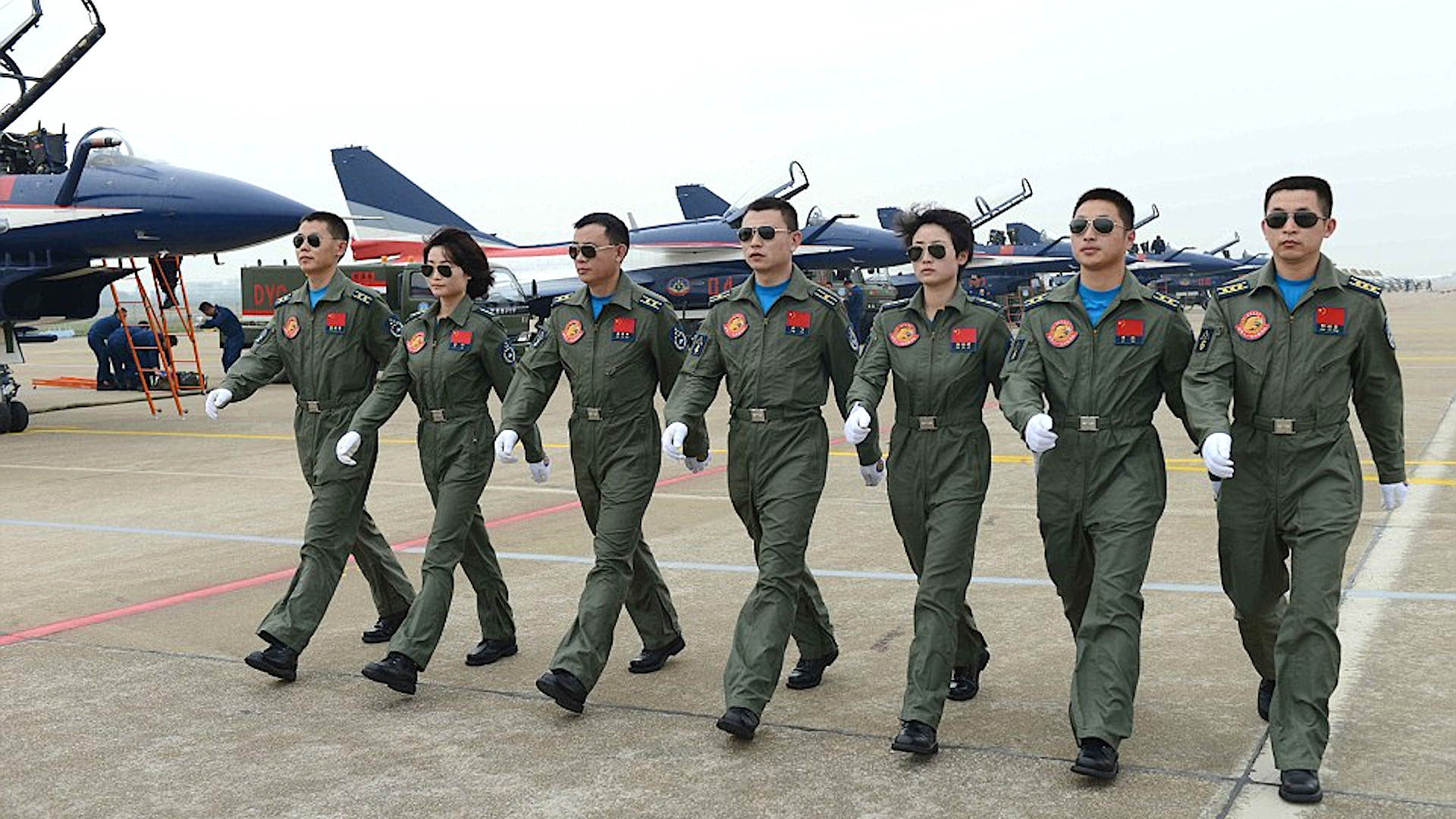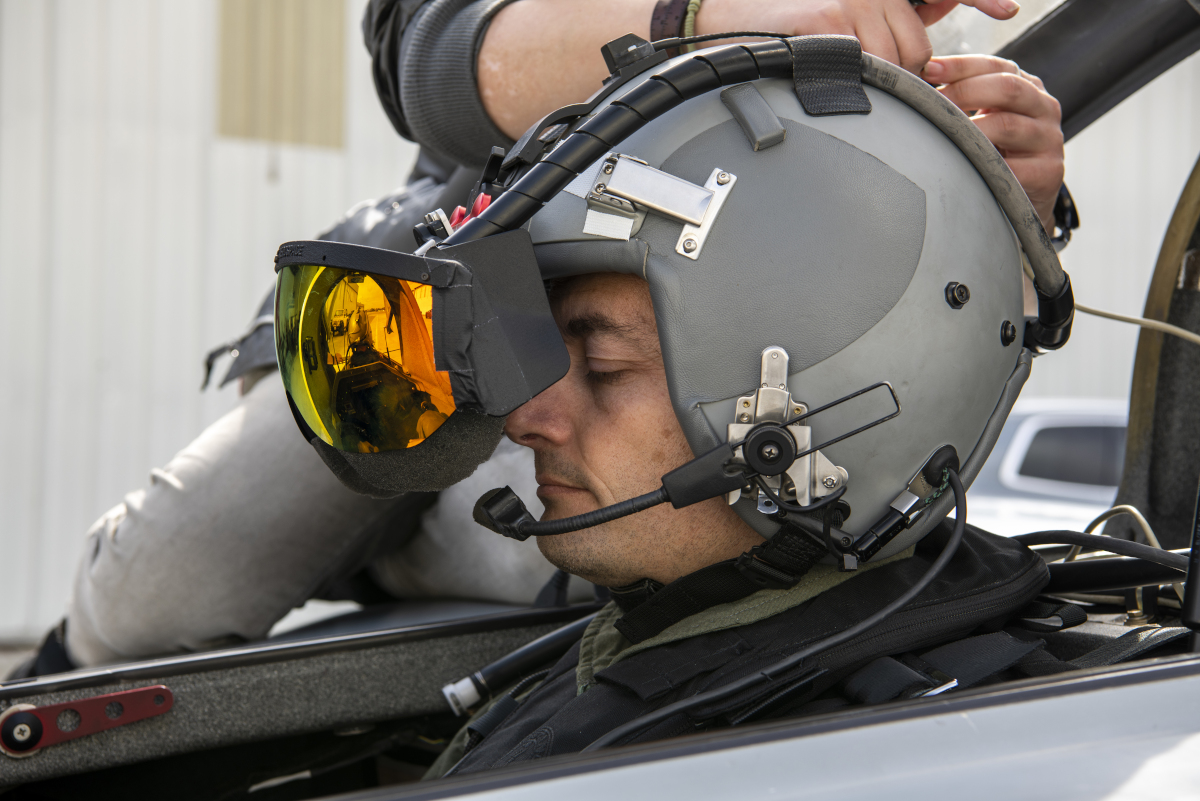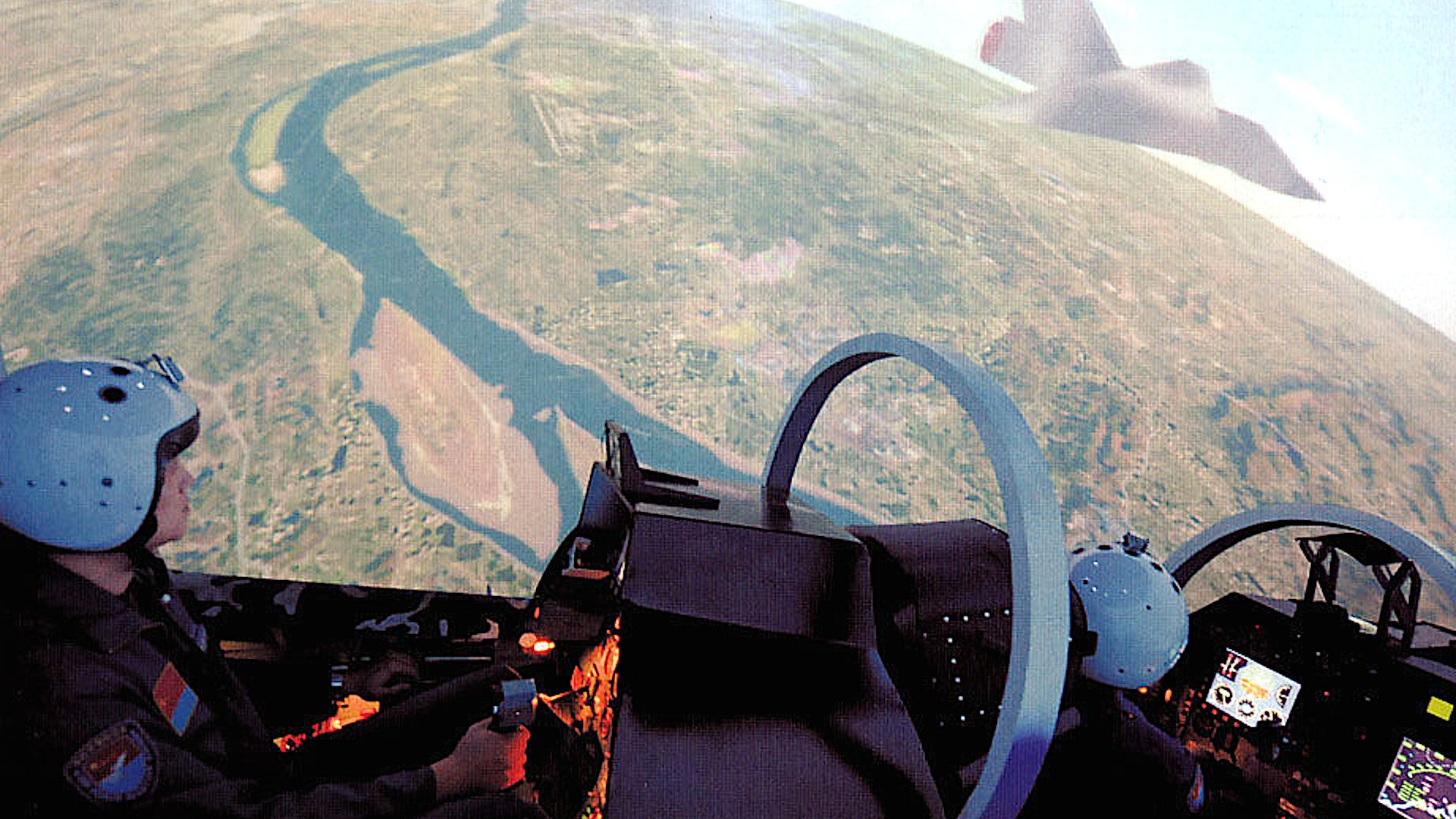A recent Chinese state media report claims that pilots from the country’s air force have been losing a not insignificant amount of the time to artificial intelligence-driven opponents in simulated dogfights. This sounds reminiscent of the very public outcome of the U.S. Defense Advanced Research Projects Agency’s AlphaDogfight Trials last year, work that has since been leveraged in more advanced demonstrations. It also underscores the People’s Liberation Army’s growing interest and investment in the development of advanced artificial intelligence and machine learning technologies, generally.
Earlier this week, Chinese state-run outlet Global Times reported on the People’s Liberation Army Air Force (PLAAF) squaring off in simulators against “AI aircraft,” citing a separate story from this past weekend in the PLA Daily, the official newspaper of the Chinese armed forces. An English version of the original PLA Daily story could not be immediately found.

“The AI has shown adept flight control skills and errorless tactical decisions, making it a valuable opponent to hone our capabilities,” Du Jianfeng, identified as the commander of an unspecified PLAAF brigade assigned to the PLA Central Theater Command Air Force, told PLA Daily, according to Global Times.
Global Times‘ story also says that the AI, which reportedly has been in use during simulator training for “years” now, has the ability to learn “from the pilots as it gathers data from each training session.” As such, “at first, it was not difficult to win against the AI. But by studying data, each engagement became a chance for it to improve,” Fang Guoyu, a group leader within Du’s brigade, also told PLA Daily. Fang is further identified as a top performer in a recent real-world aerial combat exercise.
“Fang used a [sic] hard-thought tactics against the AI and finally beat it by a small margin, but in the next session, the AI used the same tactics against Fang to defeat him,” the Global Times piece continued.
It is, of course, important to note that all of this is entirely according to Chinese state-controlled media outlets. Regardless of how long it’s been in use at Du’s brigade, it’s also unclear how widespread the PLAAF’s use is of the technology in simulated training, or for any other applications, and how aggressively they might be pursuing its continued development.
At the same time, it is immediately interesting that the PLA Daily itself, let alone Global Times, which is affiliated with the People’s Daily, the Chinese Communist Party’s official newspaper, have chosen to highlight an apparent top PLAAF pilot struggling against and even losing to an advanced AI in simulated combat, regardless of how accurate the description of this mock opponent’s capabilities may or may not be.
The video below shows PLAAF pilots engaged in live aerial combat training.

Still, the kind of technology, and its capabilities, that the Global Times story describes are hardly outside of the realm of what possible within what is publicly known about the state of AI technology. In fact, what we’ve been told about the simulated AI-driven opponents that the PLAAF has been using to train its pilots, and Fang’s specific experiences, sound extremely similar to the outcome of the publicly broadcast finale to the aforementioned AlphaDogfight Trials, an initiative led by the Defense Advanced Research Projects Agency (DARPA), last year.
At the conclusion of a three-day event in August 2020, a U.S. Air Force F-16 Viper fighter jet pilot from the District of Columbia Air National Guard was beaten five times in a row in one-on-one simulated aerial combat against an AI-driven “pilot” developed by a company called Heron Systems. The actual F-16 pilot, who was referred to only by the callsign “Banger,” was also identified as a graduate of the Air Force Weapons School’s F-16 Weapons Instructor Course. It is also worth noting that, afterward, pilots and experts raised questions about just how valid and applicable the results of these trials might be to discussions about real-world aerial combat.

“This [the capabilities of the AI and its ability to learn] forces pilots to develop more and more innovative tactics and make breakthroughs to win these simulations,” the PLA Daily story said, according to Global Times. “Simulated training can boost training efficiency, save costs and lower flight risks, and with the rapid development of technology, it has become a common goal for major military powers around the world to take advantage of training simulations.”
These are all certainly potential benefits, broadly, of integrating AI and machine learning into military training regimens. The U.S. military, for instance, is also increasingly exploring the use of AI and machine learning technologies to help improve and economize aerial combat and other kinds of training. One particularly notable example is the work a company called Red 6 has been doing in cooperation with the U.S. Air Force to develop an augmented reality system that enables pilots in real-world jets to face off against entirely virtual opponents. You can read more about Red 6’s developments, which the company is hopeful will also be applicable to training on the ground in the future, in these past War Zone pieces.

The video below shows what the view through Red 6’s augmented reality headset actually looks like during a sortie.

Beyond the use of this technology in training, this report also speaks to the PLA’s expanding interest in AI for far broader applications and the work that has already been done in China in this arena. Algorithms that can “pilot” virtual opponents in a simulator could very well be stepping stones to ones able to operate various tiers of real-world unmanned platforms, including fully autonomous unmanned combat air vehicles (UCAV), another area of development where China continues to make significant strides. The Global Times piece pointed out that AI and machine learning technologies could be employed on manned aircraft to improve efficiency and reduce workload, including helping with decision-making during actual combat, as well.
Again, the PLA is hardly alone in all of this. The AlphaDogfight Trials were an adjacent effort to a program called Air Combat Evolution (ACE), which has described the ability of an autonomous unmanned aircraft to dogfight as “gateway to nonlinear combat autonomy” more generally. In March, DARPA announced that AI-controlled simulated F-16s were working in pairs in virtual training environments and that it was hoping to demonstrate the technology on real subscale unmanned aircraft later this year. The goal is to move on to integrating the technology into a modified full-size jet trainer aircraft by 2023.

The U.S. Air Force is also pushing ahead with its Skyborg program, which is developing a suite of AI-driven systems that it hopes will be able to operate “loyal wingman” type drones working in concert with manned platforms, as well as UCAVs. Portions of the technology could find their way into manned aircraft, too. An initial version of the Skyborg “computer brain” was flight tested for the first time earlier this year.

Separately, the Air Force has been working up to a planned demonstration, presently expected to take place in 2024, that could see a piloted fighter jet dogfight against an autonomous drone in real life. This is just some of the work being done around AI and machine learning across the U.S. military and similar developments are occurring in other armed forces around the world, as well.
In the United States, there has been a particular surge of interest in these technologies in recent years due, in no small part, to developments in China. A report from the U.S. government’s National Security Commission on Artificial Intelligence released earlier this year declared bluntly that, at present, “America is not prepared to defend or compete in the AI era.”
“China’s plans, resources, and progress should concern all Americans,” it added. “It is an AI peer in many areas and an AI leader in some applications.”
So, while it’s hard to say what the exact capabilities of the AI that PLAAF pilots have been training against in simulators might be, it mirrors developments elsewhere, including the United States. It also underscores the major investments that the Chinese military is making in this field as it strives to become a world leader in the application of AI technologies.
Contact the author: joe@thedrive.com
